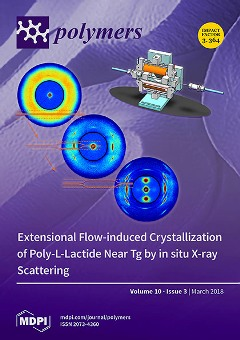Open AccessArticle
Antibacterial Capability, Physicochemical Properties, and Biocompatibility of nTiO2 Incorporated Polymeric Scaffolds
by
Cijun Shuai 1,2,3, Chenying Shuai 2, Pei Feng 2, Chengde Gao 2, Shuping Peng 4,* and Youwen Yang 1,2,*
1
Jiangxi University of Science and Technology, Ganzhou 341000, China
2
State Key Laboratory of High Performance Complex Manufacturing, College of Mechanical and Electrical Engineering, Central South University, Changsha 410083, China
3
Key Laboratory of Organ Injury, Aging and Regenerative Medicine of Hunan Province, Changsha 410008, China
4
The Key Laboratory of Carcinogenesis of the Chinese Ministry of Health, Xiangya Hospital, Cancer Research Institute, Central South University, Changsha 410008, China
Cited by 39 | Viewed by 5494
Abstract
Postoperative infection is a common risk which brings about failure in bone transplantation. In this study, nano titanium dioxide (nTiO
2) was incorporated into Polyetheretherketone/polyglycolicacid (PEEK/PGA) blends to construct antibacterial scaffolds via selective laser sintering. Antibacterial capability was assessed using
Escherichia coli
[...] Read more.
Postoperative infection is a common risk which brings about failure in bone transplantation. In this study, nano titanium dioxide (nTiO
2) was incorporated into Polyetheretherketone/polyglycolicacid (PEEK/PGA) blends to construct antibacterial scaffolds via selective laser sintering. Antibacterial capability was assessed using
Escherichia coli (
E. coli) and
Staphylococcus aureus (
S. aureus). The results demonstrated that the scaffolds with nTiO
2 presented an effective antibacterial activity, which might be attributed to that nTiO
2 would do the mechanical and oxidative damage to bacteria by occurring contact actions and generating reactive oxygen species (ROS), and thus killed bacteria from structure and function. Moreover, nTiO
2 could enhance the tensile strength and modulus of scaffolds due to the reinforcing effect and its uniform disperse. And the cell culture experiments showed that nTiO
2 stimulated cellular attachment and proliferation. Besides, it also elevated the hydrophily and thermal stability of scaffolds. These results suggested that the polymeric scaffolds incorporated nTiO
2 had potential application in bone tissue engineering.
Full article
►▼
Show Figures






